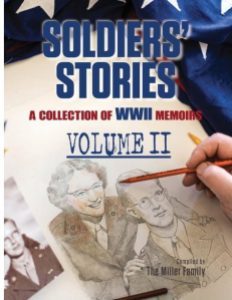Joy Neal Kidney's Blog, page 66
July 23, 2021
Lee Habeeb, Founder of Our American Stories, in Iowa
God and Country
Last weekend’s God and Country event was the 15th for Monty and Becky Button of rural Adel. They are fans of Our American Stories and had arranged for a producer to interview their friend Ron Mason, a WWII veteran who was over 100 years old.
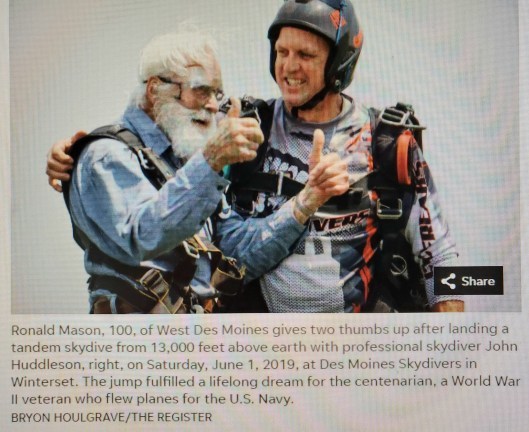
Producer Joey Cortes brought up the idea of coming to Iowa with Monty, who suggested they come for their annual God and Country event.
Our American Stories founder, Lee Habeeb, and two producers were here for two events. One was the Our Iowa Stories contest at the Machine Shed Restaurant.
The other was an outdoor Sunday morning service, complete with patriotic hymns. Lee Habeeb was the main speaker. He has such a heart for telling America’s best stories, reminding us of our positive heritage. His stories were powerful.
This man of Lebanese and Italian descent began with a quote from President Ronald Reagan’s farewell address, “If we forget what we did, we’ll forget who we are.”

He reminded us that the song “God Bless America,” which he led us in singing (then sang a stanza for us), was written by a Russian Jew, Irving Berlin. And that Berlin donated the money the song earned to the Boy Scouts of America.
I’d noticed the OAS story about Dr. Benjamin Rush, but hadn’t listened to it yet. After hearing Lee’s rendition of it, I listened to it again via their website after we got home. What an amazing story.
Habeeb also talked about the last speech Rev. Martin Luther King, Jr. It was given just the night before he was killed.
And he told the story of Master Sgt. Roddy Edmonds‘ leadership and quiet courage after his unit had been captured. Compelling history from the Battle of the Bulge during World War II.
I love hearing America’s stories through Lee Habeeb’s heart for them. I’m still amazed that Our American Stories came to “flyover country,” but so thankful they did. All started with the interview Monty Button set up with them for WWII veteran, Ron Mason.
At the end of the incredible service, Monty was sad to announce that Mr. Mason had died just the evening before.
 Becky and Monty Button
Becky and Monty ButtonAt the last, he played part of the interview with Ron Mason that Joey Cortes had produced, first aired last April.
July 21, 2021
Bridges & Angels: The Story of Ruth
The Book
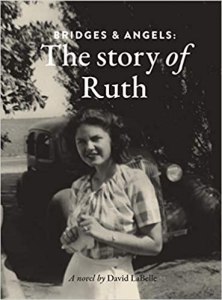
David LaBelle’s first novel Bridges and Angels: The Story of Ruth blurs the line between fiction and memoir as he rewrites the ending to his own childhood tragedy. The Story of Ruth explores what could have happened when the author’s mother disappeared in a California flood during his senior year, in 1969.
The Author
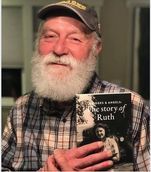
Dave LaBelle is a photojournalist and has worked for 20 newspapers and magazines in nine states. In 1989 while at Western Kentucky University, he published the first edition of The Great Picture Hunt. He’s the author of Lessons in Death and Life, about the ethics of photographing grief. In 1991, the NPPA honored LaBelle with the Robin F. Garland Award for photojournalism education.
In 2009, he published I Don’t Want to Know All That Technical Stuff, I Just Want to Shoot Pictures, an easy-to-read book about basic photography skills designed for beginners. Most recently, David published his first novel, Bridges and Angels: The Story of Ruth, in 2019.
He teaches and directs the photojournalism program at Kent State University in Ohio.
My Thoughts
Haunting and even tormenting at times, this story, which has at it core a real nightmare from the author’s past, also carries with it a redemptive beauty. The author’s gift of photography shows up in compelling similes, giving the reader the experiences right along with the characters.
Unforgettable images and drama. The nursing home scenes are so tastefully wrought.
July 19, 2021
“Soldiers’ Stories” Volume 2–guest post by Pacific Paratrooper, G. P. Cox
Soldiers’ Stories, Vol. II
After reading the Miller Family’s first volume OF SOLDIERS’ STORIES, I was excited to receive Volume # 2. I was not disappointed.
Not only was I, as usual, proud to see 4 pages of my own Father’s stories in print, but even discovered another member of the 11th Airborne Division represented among the other memoirs.
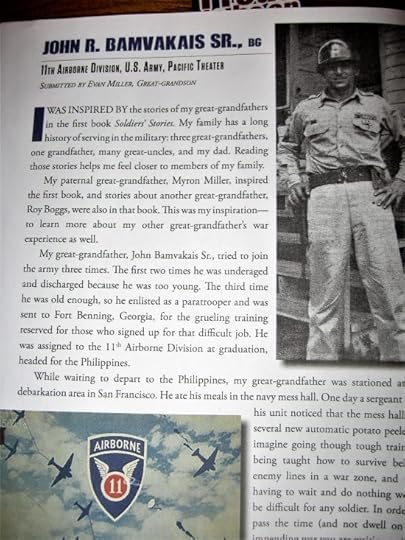
Most of my readers tell me that they find the personal stories and letters from my father and other veterans to be their favorite posts. In this book, readers are privileged to have over 300 pages of such tales.
The many photographs give you a personal perspective, both humorous and educational, of a time that dramatically altered the entire world. Men and women alike are included in this well constructed journal for the generation we are so quickly losing.
Every branch of service, in each theater of operation, is represented along with the invaluable contributions of the home front military, women, civilians and our British Allies.
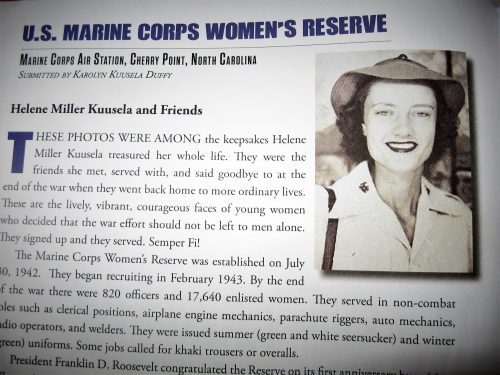
Modern day honoring of those buried in foreign lands and innumerable photos of the people who fought for us and the treasures they left behind. Even fellow blogger and author, Joy Neal Kidney, has the Wilson Family included.
You can hear in their words the eagerness to serve their country, their laughter and the camaraderie of close unit ties. You might even feel their pain.
Inspired by the Miller Family’s, SSgt. Myron Miller, of the 83rd Infantry, I can unquestionably recommend both Volume # 1 and # 2 of SOLDIERS’ STORIES!
For Myra Miller’s blog, click HERE! You may order autographed copies from them.
Pacific Paratrooper website.
Here is my own review of Volume II of Soldiers’ Stories.
July 16, 2021
Our IOWA Stories
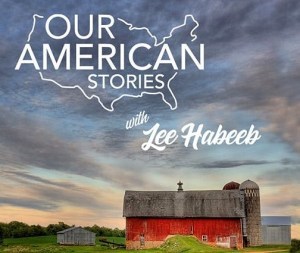
About three years ago, Our American Stories was a new program on WHO-Radio. The ad for it said “just stories, no politics.” I had to give them a try. I was soon hooked by a sports story. Sports? Me? It was the back story that made it so compelling.
They also said to send stories–“a paragraph and a photo,” so I did. A producer wanted me to record it. I asked Mike Dorwart at WHO what on earth I’d gotten into, and what I should do about it? He said to download an app on my phone and use it to record.
My first story was aired August 14, 2018. “Family Sends Five Sons to War.” That November, they produced another one, about Uncle “Donald Wilson: Humble Hero.” There have been a dozen in all.
Last year, their broadcasts were a godsend. Besides underlying fibromyalgia, I had a shoulder replacement right before the pandemic set in. My only outside interactions were with the physical therapist. Social media is my “ticket out of the house” normally, but it became dark and combative. I “unfollowed” several people.
How I enjoyed those wonderfully positive and compelling Our American Stories stories, via radio or website or their Facebook page. This year I’ve also recommended storytellers to them. That’s been even more fun.
There’s has been such warmth emanating from Oxford, Mississippi, where Our American Stories originates, because one man (Lee Habeeb) heeded a God-nudge to tell America’s positive stories to Americans. What an audacious idea, that something that winsome could make a difference.
It’s been a delight to snag an ember from Our American Stories as they’ve reached across the nation, to be able to hand a nugget of that ember to other historians, authors, and storytellers, to help spread America’s history and mentoring and redemption stories, entrepreneurships and sports, music, and even family stories.
Our Iowa Stories

Their very first live in-person storytelling event/contest, called Our Iowa Stories, was Wednesday night, right in the middle of flyover country. Six storytellers, three whom I’d nudged–Emina Hastings (coming to America at age 12, as a refugee of the Bosnian war with her family), Marilyn Bode (having polio as a child), and Paul Berge (joining the army, humorous). Two of them won prizes–Emina got 2nd place ($750), Paul got 3rd ($250).
Scott James told stories about not judging others’ actions and Sarah Haywood told about adopting two children after being widowed. The 1st prize winner ($1000) was Sue Woods, who told a compelling story about finding her biological family.
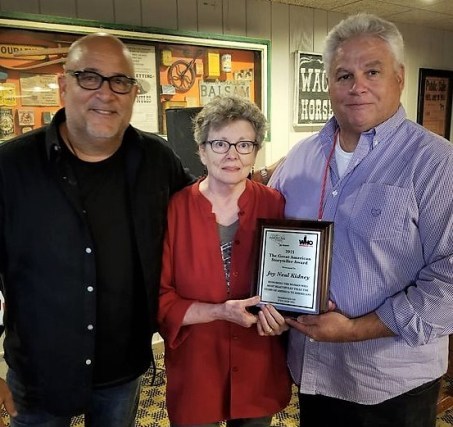 Our American Story founder Lee Habeeb and Mike Dorwart, Program Director of WHO Newsradio 1040, presented me with the 2021 Great American Storyteller Award. “Honoring the woman who most beautifully tells the story of America to Americans.” Amazed and humbled.
Our American Story founder Lee Habeeb and Mike Dorwart, Program Director of WHO Newsradio 1040, presented me with the 2021 Great American Storyteller Award. “Honoring the woman who most beautifully tells the story of America to Americans.” Amazed and humbled.They also gave Sue a plaque saying that the 1st place award was named for me. How did this happen? What a blessing to be included in a small corner of this awesome idea, of making a difference one story at a time.
Our American Stories Comes to Iowa

About three years ago, Our American Stories was a new program on WHO-Radio. The ad for it said “just stories, no politics.” I had to give them a try. I was soon hooked by a sports story. Sports? Me? It was the back story that made it so compelling.
They also said to send stories–“a paragraph and a photo,” so I did. A producer wanted me to record it. I asked Mike Dorwart at WHO what on earth I’d gotten into, and what I should do about it? He said to download an app on my phone and use it to record.
My first story was aired August 14, 2018. “Family Sends Five Sons to War.” That November, they produced another one, about Uncle “Donald Wilson: Humble Hero.” There have been a dozen in all.
Last year, their broadcasts were a godsend. Besides underlying fibromyalgia, I had a shoulder replacement right before the pandemic set in. My only outside interactions were with the physical therapist. Social media is my “ticket out of the house” normally, but it became dark and combative. I “unfollowed” several people.
How I enjoyed those wonderfully positive and compelling Our American Stories stories, via radio or website or their Facebook page. This year I’ve also recommended storytellers to them. That’s been even more fun.
There’s has been such warmth emanating from Oxford, Mississippi, where Our American Stories originates, because one man (Lee Habeeb) heeded a God-nudge to tell America’s positive stories to Americans. What an audacious idea, that something that winsome could make a difference.
It’s been a delight to snag an ember from Our American Stories as they’ve reached across the nation, to be able to hand a nugget of that ember to other historians, authors, and storytellers, to help spread America’s history and mentoring and redemption stories, entrepreneurships and sports, music, and even family stories.
Our Iowa Stories

Their very first live in-person storytelling event/contest, called Our Iowa Stories, was Wednesday night, right in the middle of flyover country. Six storytellers, three whom I’d nudged–Emina Hastings (coming to America at age 12, as a refugee of the Bosnian war with her family), Marilyn Bode (having polio as a child), and Paul Berge (joining the army, humorous). Two of them won prizes–Emina got 2nd place ($750), Paul got 3rd ($250).
Scott James told stories about not judging others’ actions and Sarah Haywood told about adopting two children after being widowed. The 1st prize winner ($1000) was Sue Woods, who told a compelling story about finding her biological family.
 Our American Story founder Lee Habeeb and Mike Dorwart, Program Director of WHO Newsradio 1040, presented me with the 2021 Great American Storyteller Award. “Honoring the woman who most beautifully tells the story of America to Americans.” Amazed and humbled.
Our American Story founder Lee Habeeb and Mike Dorwart, Program Director of WHO Newsradio 1040, presented me with the 2021 Great American Storyteller Award. “Honoring the woman who most beautifully tells the story of America to Americans.” Amazed and humbled.They also gave Sue a plaque saying that the 1st place award was named for me. How did this happen? What a blessing to be included in a small corner of this awesome idea, of making a difference one story at a time.
July 14, 2021
Work Bibs and Dress Bibs: Big Smith Overalls
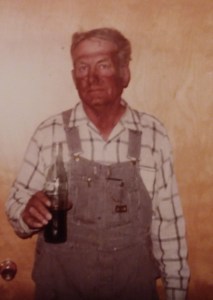 Before tractors had cabsWork bibs: a pocket watch
Before tractors had cabsWork bibs: a pocket watch and a DeKalb bullet pencil
with a little metal cap.
Shirtsleeves rolled to the elbow.
A Pioneer seed corn cap.
Tired leather work boots
Rockford socks.
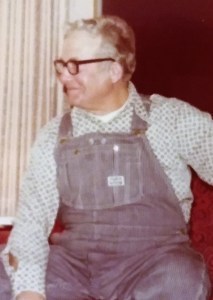 Christmas 1976
Christmas 1976Dress bibs: New ones,
after showering in the cellar,
good enough for company,
opening Christmas gifts
even if your mother-in-law is there,
savoring a game featuring Johnny Unitas.
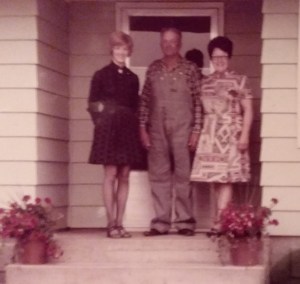 Gloria, Dad, and Mom, 1980s, Dexter farm, having just entertained “company”
Gloria, Dad, and Mom, 1980s, Dexter farm, having just entertained “company”
July 12, 2021
A Couple of Delightful Iowa Memoirs
More Country Roads:
More Stories, Opinions and Imaginations of an Iowa Country Boy
Arvid Huisman
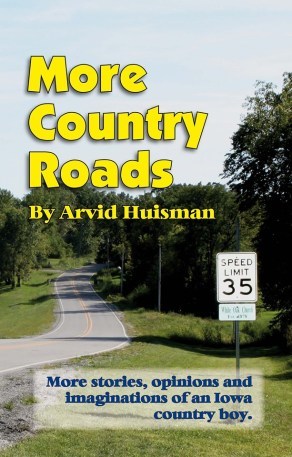

Arvid Huisman has been a journalist for many years, publishing the Creston News Advertiser, when his Country Roads column began. His regular poignant and winsome column still runs in the Iowa History Journal. He has composed more than 900 Country Roads columns.
After retiring from the newspaper career, he was a development director for the Salvation Army in Central Iowa. Arvid writes from his heart to and about the people he holds dear–folks whose values and memories were created in the rural Midwest.
My Thoughts: I’ve enjoyed Arvid’s delightful stories for years. For years my sister taught art in Creston, where he was the newspaper publisher. She was always bringing his columns to share. I later discovered he’d published this compilation of some of them. Sure wish you could still get the first volume. Whenever the new issue of Iowa History Journal arrives in the mail, County Roads is the first page I turn to.
Arvid has a lively sense of humor, a great memory for details, and such endearing stories.
More Country Roads is available for $16.50 (includes shipping) from Huisman Communications, 9602 Bishop Drive, #59, West Des Moines, IA 50266
—–
Growing Up Country: Memories of an Iowa Farm Girl
Carol Bodensteiner
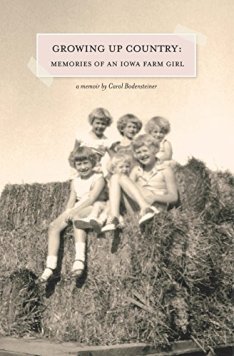

Growing Up Country: Memories of an Iowa Farm Girl delivers a treat as delicious as oatmeal cookies hot out of the oven – a memoir of a happy childhood. In charming and memorable vignettes, Carol Bodensteiner captures rural life in middle America, in the middle of the 20th Century. Bodensteiner grew up on a family-owned dairy farm in the 1950s, a time when a family could make a good living on 180 acres. In these pages you can step back and relish a time simple but not easy, a time innocent yet challenging. If you grew up in rural America, these stories will trigger your memories and your senses, releasing a wealth of stories of your own. If the rural Midwest is foreign territory to you, Carol s stories will invite you into a fascinating and disappearing world.
The Author: Carol Bodensteiner is a writer who finds inspiration in the places, people, culture, and history of the Midwest. Born in Iowa and raised on her family’s dairy farm, Carol grew up with a love of the land and an appreciation for family that form the foundation of her writing. A graduate of the University of Northern Iowa and Drake University, Carol built a successful career in public relations consulting before turning to creative writing. She is a regular participant in the University of Iowa Summer Writing Festival. Carol blogs about writing, her prairie, gardening, and whatever in life interests her at the moment. Her writing has been published in several anthologies. She published her memoir GROWING UP COUNTRY in 2008. Her debut novel GO AWAY HOME was published in 2014.
My Thoughts: This memoir of growing up on an Iowa farm (with two sisters and no brothers) in the 1950s is a treasure, especially since I also grew up on an Iowa farm (with one sister, no brothers) in the 1950s. Dad never wanted chickens around and didn’t have dairy cows, so I learned a lot about the dailiness of dealing with both. My sister and I were also in 4-H, so I could relate to preparing demonstrations and projects to take to the county fair. A family working together like they did to keep a small farm running and economically viable is a disappearing way of life. “Growing Up Country” is a wonderful way to keep those day alive.
Arvid Huisman was kind enough to write an endorsement for Leora’s Dexter Stories: The Scarcity Years of the Great Depression.
July 9, 2021
Our American Stories Comes to Iowa
Our Iowa Stories
Our American Stories and WHO is hosting a live storytelling event on Wednesday July 14th in the Des Moines area. It will be a night of beautiful and inspiring stories from the great people of Iowa. The storytellers will be picked from our storytelling contest. The best submissions will perform their stories live at the event, and the audience will vote on their favorites.
The top three winners will receive cash prizes. $1,000 for first place, $750 for second place, and $250 for third place. You will be able to order food and drinks during the event. It will take place at the Machine Shed, and begins at 6:30pm. Join us for an inspiring night of great American stories. It’s free! Register here.
So far, I know two finalists: Emina Hastings, who came to Iowa as a teenager with her parents two dozen years ago as refugees of the Bosnian war. They were one of the families we helped get started here.
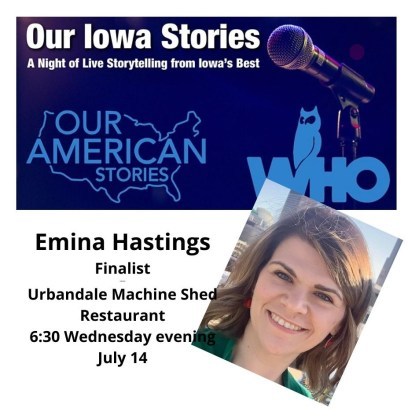
Also Marilyn Bode, a childhood friend who caught polio in 1952 and underwent extensive physical therapy at home.

Lee Habeeb at the God and County Celebration
Our American Stories founder Lee Habeeb will be the guest speaker at the 15th Annual God and Country Celebration north of Adel (25289 N Avenue) on Sunday, July 18, at 10:00.
Potluck, paddleboat, zip line, and pond fun after. Bring side dish to share, swim gear, lawn chairs, and friends!Location is North of Adel on 169 between The County Farm and “The Button Hole” Entrance will be marked with orange cones. Map and information here.July 7, 2021
Starlings (poem)
Starlings
Like unwanted starlingswith their harsh shrieking,messy droppings,roosting in stark branches–unwelcome, as the long,stark and unbidden yearsof the Great Depression.Would that the dustand drought and scarcityrise like those uninvited pestsof speckled flocks,never to return.(2020)—–Leora’s Dexter Stories: The Scarcity Years of the Great Depression. (Story in Chapter 44)July 4, 2021
Killed in Action on Independence Day 1863
Company H, 39th Iowa Infantry Regiment
After the call for volunteers came from the White House, James Redfield of Wiscotta, Iowa, became lieutenant colonel of Company H, 39th Iowa Infantry Regiment, during the Civil War. (I’ve read that only single men were accepted as volunteers, but Redfield was a family man, as were others in this unit.)
Redfield was born in New York in 1824. Iowa still wasn’t a state when he graduated from Yale in 1845, and for a time, served in the office of Secretary of State in New York. He also lived in Indiana for a time, but moved to Iowa in 1855, where he married and started a family in the small Dallas County town of Wiscotta.
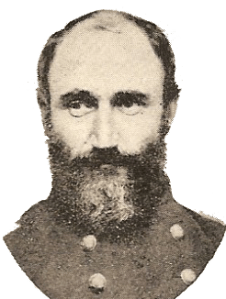
Redfield served in several county offices and was elected an Iowa State Senator from a district which, at that time, consisted of six counties. Because the Civil War intervened, Redfield served only one term in the Iowa Senate.
President Lincoln had called for 75,000 volunteers. Iowa’s quota was 950 men, or one regiment of soldiers. Three times that many volunteered on the first Iowa call.
Redfield raised a company of soldiers, most of whom were from Indiana, ex-Hoosiers like himself. He was elected captain and, upon the organization of the 39th Iowa Infantry Regiment, he was elected its lieutenant colonel.
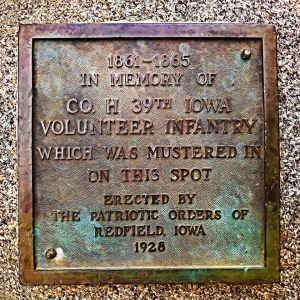
A plaque and a flagpole in the city park of nearby Redfield, Iowa–yes, named for James Redfield–marks the spot where Company H of the 39th Infantry mustered for the Civil War in 1862.
When they marched for the south later that year, there were at least three Marshall men along–the brothers Collin and Miles C., and a nephew Clayton, all ex-Hoosiers.
Miles Marshall
Old Miles Marshall of Economy, Indiana, was always an abolitionist. He and a great many others had hoped that the Whig party would abolish slavery. Two of his sons (Collin and Miles C.–better known as Bob) served in the War Between the States, as well as three grandsons–Clayton, and two more in Indiana regiments.
Several of Miles Marshall’s children had already moved to Dallas County, Iowa, including one who platted the town of Dexter, and another who discovered and developed a mineral spring, which eventually became the popular Dexfield Amusement Park. Collin and Bob were the youngest brothers.
According to C. E. Charles, an Indiana historian who was fascinated by the great number of Wayne County, Indiana, families who relocated to Dallas County, Iowa, the Marshall brothers and their nephew were young farmers whose families would suffer from their absence.
Collin Marshall owned a farm west of what is now Dexter. Struggling to get started in cattle-feeding, he nevertheless talked over the war situation with his wife Sallie and decided to enlist.
A few months later, she wrote, “I thought I never could bear for Coll to go in the war, but he thought it was his duty.”
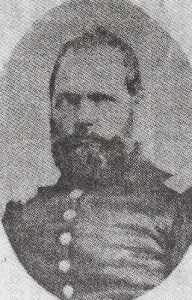
After training, the 39th was sent to Eastern Iowa where they boarded steamboats and headed south to join the fight.
Collin became second lieutenant of Company H. The spring of 1863, the Iowans were sent ranging far into northeast Alabama, destroying railroads and anything else useful to the Confederates.
“North Alabama is the finest country I have seen in the south, but houses, barns and fences are alike in ashes now. We let them know we were here.”
They gathered livestock, grain, and other supplies, believing that nothing less than complete defeat of the Confederates would end the war and get them home. While such measures hampered the military, they aroused the civilians who struck back, harassing them anyway they could.
July 4, 1863
July 4, 1863, a small force from Company H were camped near Iuka Springs, Mississippi, guarding a corral of cattle destined for the army, when news came of Vicksburg’s surrender.
When Collin’s sister Minerva got the bad news, she wrote to relatives in Indiana what happened that Fourth of July: “I must first tell of the death of Coll. He was shot in the afternoon of the 4th. . . while riding out about a mile from camp, by a company of Guerillas, some eight or ten in number, who lay hid, then halloed to surrender and fired a volley at the same time, two balls passing through the breast and one through the neck. His horse was wounded also. He raised his hand for them not to shoot, but they only wanted his life.”
A coffin was procured from Memphis, according to Minerva. Lieutenant Collin Marshall’s body was embalmed and started home two days later accompanied by his younger brother Bob.
Ten days later, Bob arrived in Redfield without the coffin of his 37-year-old brother. He got as far as Eddyville, Iowa, eighty miles from home, but there was no freight service from there. Apparently, according to Mr. Charles, steamers couldn’t navigate the Des Moines River north beyond that point in July. Bob had his brother buried there temporarily, then came on alone.
Their older brother, Pete Marshall, drove a team of horses and a wagon to Eddyville, returning home seven days later with Collin’s casket. He was buried “in Masonic style” on a hill at Wiscotta. A military burial might have been more fitting, but there were not enough soldiers left around Redfield to accomplish that.
Indiana
Two of old Miles Marshall’s grandsons, Swain and Alonzo, also served with Indiana Units. Alonzo was wounded by a minie ball but finished the war working at a military hospital. Swain also survived the war, part of the victory parade in Washington, DC.
Their sister, Rhoda Marshall, had married a Tennessee man. When the war broke out, John Neal joined a Tennessee Confederate Cavalry unit. But by then, they were living in her home state of Indiana and his own brother had joined the Union. John deserted the Confederates and joined up with an Indiana Cavalry unit. After the war, they too moved to Dallas County, Iowa.
The Civil War and other letters of the Marshall family are now owned by the Indiana Historical Society at Indianapolis.
—–
The loss of their lieutenant Collin Marshall was only the beginning of trouble for Company H. On the morning of July 7, their corral was surrounded by 500 rebels, who captured 28 men–including nephew Clayton Marshall–and all the livestock. Redfield men were marched over the mountains, some barefoot and poorly clothed because of the early morning surprise. They were shipped to the notorious prison at Belle Island but were later exchanged.
Col. James Redfield was wounded twice. First he was shot in the foot, then later in the leg, but he refused to leave his post. His life ended soon after when he was shot through the heart during the battle of Allatoona Pass, Georgia in October, 1864. He was 40 years old.
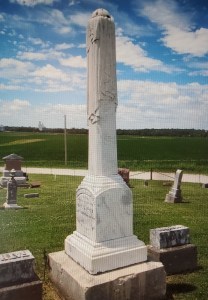
Redfield’s body was returned to Dallas County, where he is also buried in the Wiscotta Cemetery. A Civil War Monument marks his grave. “Founder of yonder town,” is carved on one side of the monument. You can see the town of Redfield from the hill where he’s buried.
 Lieutenant Collin Marshall’s grave is just to the southeast of the monument.
Lieutenant Collin Marshall’s grave is just to the southeast of the monument.
 After the war, local reunion groups of the GAR, or Grand Army of the Republic, built meeting halls. The GAR post in Redfield, Iowa, is named for Collin Marshall, who was killed in the War Between the States on Independence Day, 1863.
After the war, local reunion groups of the GAR, or Grand Army of the Republic, built meeting halls. The GAR post in Redfield, Iowa, is named for Collin Marshall, who was killed in the War Between the States on Independence Day, 1863.

